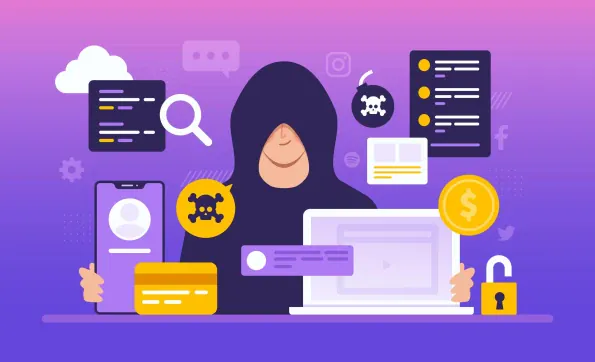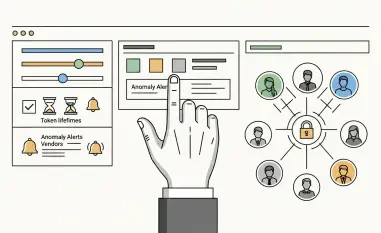A recent case involving a Maharashtra government employee has highlighted the sophisticated methods that scammers are using to deceive individuals and steal their money. Shridhar Mahuli, the victim, fell prey to a scam when he received a phone call from an individual pretending to be an employee of AU Small Finance Bank. The scammer managed to convince Mahuli to share his credit card details, resulting in a loss of Rs 2 lakh. This incident shows the importance of being vigilant and cautious when dealing with sensitive information over the phone. By understanding the tactics used by such fraudsters, individuals can better protect themselves from falling victim to similar schemes.
1. Modus Operandi
One of the primary tactics used by scammers is identity spoofing, where the scammer pretends to be an employee of a legitimate bank. In Mahuli’s case, the scammer impersonated an AU Small Finance Bank employee to build trust with the victim. Often, these scammers present fake ID cards that may have been stolen from current or former employees of the bank. This tactic aims to create a sense of legitimacy and urgency, making the victim more likely to comply with the scammer’s requests.
Another common approach involves fabricating a scenario that revolves around linked health insurance payments. The scammer asks the victim if their health insurance premium payments are linked to their credit card, and then claims that the amount will be deducted soon. To further execute their scheme, scammers send a link to an APK (Android Package Kit) file, instructing the victim to download it onto their device. This APK file contains malware that allows the scammer to gain remote access to the victim’s device or to install keyloggers that record sensitive information such as IDs and passwords.
Once the malware is installed, scammers can remotely access the victim’s phone and prompt them to enter their credit card details. They then take a screenshot of the screen, capturing all the necessary information required to make unauthorized transactions. This entire process can be quick and efficient, making it difficult for the victim to realize they have been scammed until it’s too late.
2. Recognizing Red Flags
A crucial aspect of protecting oneself from such scams is recognizing the red flags that may indicate fraudulent activity. One major warning sign is receiving an unsolicited call from someone claiming to be a bank official. Scammers often create a sense of urgency by asserting that a deadline is approaching or that immediate action is required. This pressure can cause victims to share their credit card information without fully considering the potential risks.
Another red flag is the request to download an APK file or any other type of software. A legitimate bank employee would never ask a customer to install unknown software on their device. Therefore, it is essential to be highly skeptical of such requests and to immediately decline downloading any files or clicking on any links provided by the caller. Additionally, sharing sensitive banking details, such as card numbers, PINs, or CVV numbers, should be strictly avoided.
If there is any doubt or suspicion about the authenticity of a call, it is best to hang up immediately and contact the bank directly using the information available on the bank’s official website. This step ensures that any follow-up communication is genuinely with the bank and not a scammer.
3. Taking Action
When a scam is detected, immediate action is crucial to minimize losses and prevent further unauthorized transactions. If a victim realizes that they have shared their credit card details or installed malware, they should promptly inform their bank. The bank can then take steps to block the compromised card, prevent further transactions, and monitor the account for any suspicious activity. Reporting the incident to the bank allows for swift action to mitigate the scam’s damaging effects.
Furthermore, it is essential to report the scam to government agencies and law enforcement authorities. For instance, in India, victims can use platforms like Chakshu, the national cybercrime helpline number (1930), or lodge a complaint at the local police station. Reporting scams helps organizations track these fraudulent activities, spread awareness, and take preventive measures to protect others from falling victim in the future. In addition to official reporting channels, sharing personal experiences with media platforms or public initiatives that focus on digital scams can amplify awareness and encourage others to be cautious.
4. Staying Informed and Vigilant
Staying informed about the latest scams and their evolving tactics is vital in safeguarding oneself against such fraudulent activities. Scammers constantly innovate their methods to exploit unsuspecting victims, making it crucial for individuals to remain updated on current trends and potential threats. Regularly checking trusted sources, such as bank notifications, cybersecurity portals, and news outlets, can provide valuable insights into prevalent scams and preventive measures.
Moreover, individuals should foster a habit of skepticism when dealing with unsolicited communications, particularly those requesting sensitive information or prompting urgent action. It is prudent to question the legitimacy of any unexpected communication and err on the side of caution. Learning to recognize common red flags and understanding the modus operandi of scammers can empower individuals to make informed decisions when facing suspicious scenarios.
Conclusion
A recent incident involving a government employee in Maharashtra has shed light on the advanced techniques scammers are using today to swindle people out of their money. The victim, Shridhar Mahuli, became ensnared in a fraudulent scheme when he received a phone call from someone claiming to be affiliated with AU Small Finance Bank. The scammer expertly persuaded Mahuli to divulge his credit card details, which led to a significant financial loss of Rs 2 lakh.
This case underscores the critical importance of being vigilant and cautious when sharing sensitive information over the phone. The sophistication of these scams necessitates a heightened awareness and understanding of the methods used by fraudsters. By staying informed about these deceptive tactics, individuals can better guard themselves against becoming victims of similar cons. This incident serves as a stark reminder that a healthy dose of skepticism and vigilance can be crucial in protecting oneself from financial fraud.













